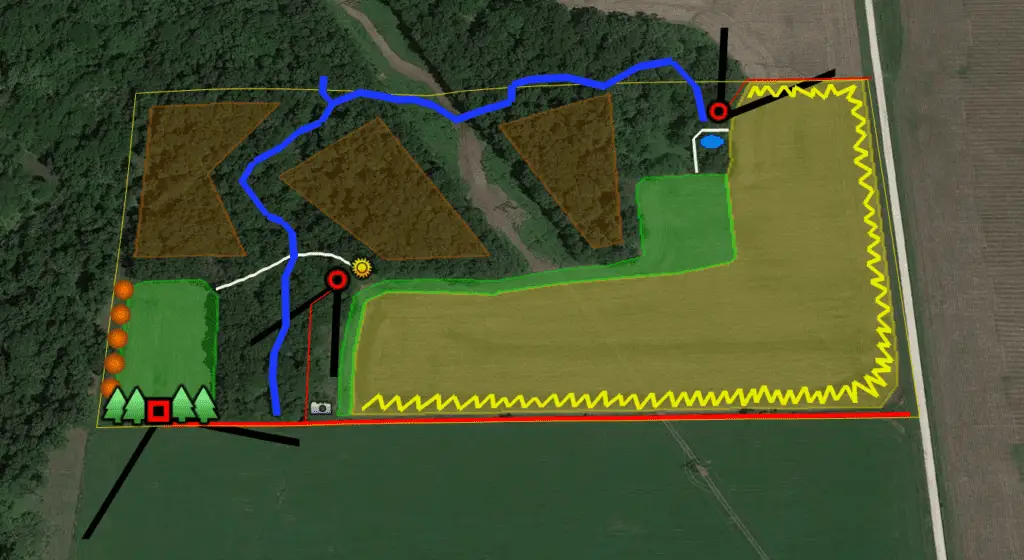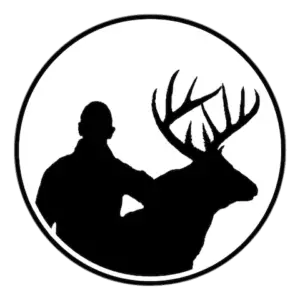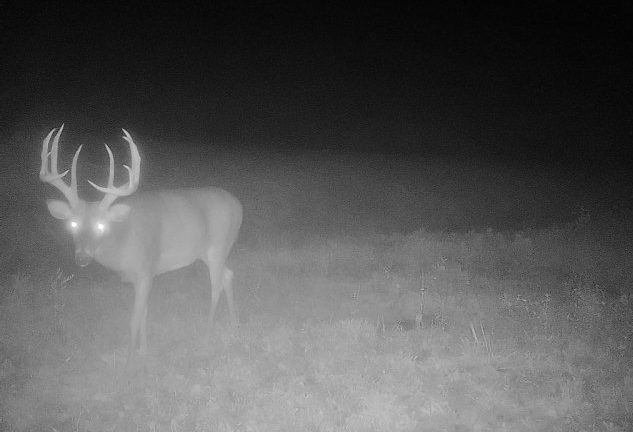One of the best ways to consistently see deer is by offering them a safe place live. This is especially true for mature bucks. Seeing a mature buck can be extremely challenging if he doesn’t feel safe. However, there are a few things you can do to make mature bucks, and the rest of the deer herd, feel safe on your property. These strategies will help improve your odds of seeing deer in person during daylight hours and not just at night on your trail camera.
You can make deer feel safe by offering them cover, food, and water in places where they aren’t likely to encounter predators, such as humans. As long as deer cannot hear, see, or smell a predator they will not feel like they are in danger. Offering a deer everything they need for survival and preventing them from sensing danger from predators, is going to create ideal conditions for deer to feel safe and move around during daylight hours.
There are several ways to improve a property to make deer feel safer and gain their trust to move around during the day. However, you still need to manage the human pressure that you or others put on a property or else the deer will not feel safe, regardless of the habitat improvements you make. The rest of this article will provide you with a list of habitat improvements to implement on your property and tactics on how to use your land so deer feel safe on your property.
Habitat improvements that make deer feel safe
Improving your land’s deer habitat is going to encourage them to spend more time on your property. However, if you want to create the best hunting property then make sure you strategically lay out these improvements. Click the link to learn how to set up a property for deer hunting.
Cover
If you don’t have cover then create some. If you have an open Ag field, creating cover can be as easy as just letting that field grow naturally and see what comes up. All you have to do is stop farming it. There are all kinds of weed seeds that will grow up into early successional habitat, and by year two the field will provide excellent cover.
If you have an old cattle pasture with lots of grass then rent some equipment or hire someone to till that field for you. Once the soil is turned over you can just let those weed seeds grow.
In open fields you can also choose to plant different tree species or tall grasses such as switchgrass to create bedding cover. This option is more expensive than letting fields just grow up on their own, but this could give you can edge to set your property apart from the neighbors so deer use it more often.
If you have nothing but woods on your property then you can create cover by opening up the tree canopy so that sunlight can reach the forest floor. You can do this several different ways. If you have quality timber, a timber company will come and harvest your timber for you. Doing this will help you earn some money while also achieving your goal of getting sunlight to the ground. You can also cut trees down yourself, bulldoze them over, or kill them by double-girdling them with a chainsaw or using a hack-and-squirt method. Before you proceed to kill trees, make sure you’re not killing something that you could sell. You also want to make sure you learn how to perform this work safely.
Food
Deer eat multiple times throughout the day and night. Having a variety of food sources (annuals and perennials) will keep deer to regularly use your property than if they only had one or two food options. Different food types will increase and decrease in attraction at different times throughout the year, so provide them with a wide variety of food to keep them using your property habitually.
The list below are foods that deer like the most. This list is not in any particular order and doesn’t include every food type that deer will eat. However, these foods seem to be the most attractive to deer. The goal is to provide as much of a variety to the deer as possible.
Annuals & Perennials
-Soybeans
-Corn
-Alfalfa
-Wheat
-Cereal Rye
-Brassicas (Radishes, Rape, Kale, Turnips)
Soft Mast
-American Persimmons
-Pears
-Apples
-Crabapples
-Pawpaw
Hard Mast
-Chinese Chestnut
-White Oak
-Red Oak
-Honey Locust
-Hickory
-Pican
Water
Deer get most of the water they need from the plants they eat, but adding a water source on your property can be an excellent attraction. Try to make a waterhole big enough so it can hold water for a long time if there happens to be a drought. Ideally, waterholes will be self-filling because you don’t want to intrude on your property to fill a water hole. That would hurt your goal of making deer feel safe on your property.
Try to place your waterhole in a shaded area where sunlight can’t get to it. This will help with evaporation. Also, keeping a waterhole close to cover will help make deer more comfortable when coming in for a drink. If they happen to sense danger, they can quickly jump back into cover where they feel safer.
Screens
Screens are visual barriers that prevent deer from seeing you, a neighbor, or cars driving by. If you want deer to feel safe on your property you can’t let them see you or anyone else.
You can create a visual screen many different ways. The best screens are the ones that you only have to create once and last for several years. I don’t recommend planting annual screens in most cases because you have to plant them every year. They usually have a hard time standing up all season long, especially if you live in an area where your likely to get snow. Here is a list of screens you can implement on your property:
Long-Term Screens
-Switchgrass
-Pine, cedar, or spruce trees
-Shrubs or bushes
-Miscanthus giganteus
-Hinge-cuts
-Bulldoze a berm
-Fence
Short-Term Screens
-Corn
-Sorghum
-Egyptian wheat
-Winter Rye (Planted in the spring)
Entry/Exit
How you enter and exit a property will make a huge impact on a deer’s feeling of safety. Access your property along its boundary without entering the heart of your land. This will help maximize the areas where deer feel safe and encourage them to stay on your property. If you have roads and trails going through the middle of your property then change your entry and exit locations if your property allows for it.
Create access on as many sides of your property that you can so you can enter and exit your property with your wind blowing away from the heart of your property and towards your neighbors. Even if deer can’t see or hear you enter and exit your property, they still might be able to smell you.
Tree stands & Blinds
Setup your tree stands and blinds in spots that you can enter, exit, and hunt without deer knowing you are there. Sometimes you have to play the odds the best you can because the majority of hunting locations aren’t 100% fool proof. Avoid putting deer stands in the middle of your property. This will help keep human intrusion down in those areas and help deer feel safe so they stick around.
Fences
Putting a fence around your property can help you manage trespassing. A fence can also act as a mental boundary that deer can relate to as a safety barrier. However, a fence can also be a mental boundary for danger if you don’t follow the advice in this article.

How to use a property to make deer feel safe
You can have incredible habitat on your property that encourages deer to feel safe, but they will only feel safe using your land depending on how well you manage human intrusion. Let’s dive in to how you can use your property to make deer feel safer and some things to try to avoid.
Everyday use
Deer will adapt to human patterns of predictability and will feel safe when those patterns repeat. For example, if deer see you drive down the same driveway every day, then they probably won’t feel threatened and won’t run off your property. However, if you rarely visit a property and deer see you drive in, they will likely associate you with danger and will either run away or stare at you to see what your next move is before running off.
Even though deer can adapt to human patterns and associate those patterns with safety, you should still provide areas on your property where deer will never encounter a human. If you want to encourage mature bucks to feel safe on your property then you will most likely need to provide those areas for them if you want them to use your property during daylight hours.
If you need to access parts of your property and there is high probability that deer will see, hear, or smell you, then do everything you can to announce to the deer that you are there. The last thing you want to do is sneak around when you aren’t hunting and spook deer. Try to drive a vehicle anytime you go somewhere on your property. Deer are less threatened by vehicles than they are by you walking around. Turn your radio up loud and give those deer plenty of heads up that you are intruding on them.
Hunting tactics
One of the most important hunting tactics to keep deer on your property feeling safe is by playing the wind. Only enter, exit, and hunt your property when the wind is blowing away from where you expect deer to be. If you can’t enter or exit a property without educating deer, then have someone drive you to your hunting locations. This is less threatening and deer are more likely to stick around or come back once they see the vehicle leave.
Try to hunt relatively close to the property boundary so that deer can feel safe on the majority of your land throughout the hunting season. Hang your tree stands high on ridges where winds are more predictable. If you’re hunting in a bottom then hunt out of an enclosed blind to trap your scent inside.
Here are a few articles that will help you out with tree stand setup and placement:
Where you should set up your deer stand
52 Tips for hanging tree stands for deer hunting
How many stands should I set up per acre
Deer can get spooked from trail cameras so try to hang them 6-8 feet high and angled down. Hanging trail cameras out of a deer’s line of sight will make it harder for them to spot and recognize. Also, try to hang your cameras in areas that you can access from a vehicle and away from sanctuary area’s (no human area’s). Lastly, use a black-flash camera so deer don’t know when they are getting their picture or video taken. An infrared camera or a flash can catch their attention and cause them to be spooked.
Things to avoid
If you want deer to feel safe on your property then you have to do everything possible to limit your human intrusion and others intrusion on your property. There are lots of recreational activities that will spook deer away from your property. Any time a deer is on your property and he is alerted to danger, he will associate that specific area with having a potential threat to his safety. In other words, when he uses that area he is more likely to have his guard up and be more alert.
Mushroom hunting, shed hunting, turkey hunting, four-wheeling, horseback riding, hiking, kayaking, etc., are all examples of recreational actives that can threaten a deer. If you want to still participate in recreational activities and also keep deer feeling safe on your property, then designate a specific area on your property as a sanctuary and never enter it.
Avoid hunting in the morning unless you’re hunting when the rut is full swing. If you hunt mornings outside of the rut, you are more likely to spook a buck than kill one. Most mature bucks are bedded down by the time the sun comes up. Play the odds when it comes to morning hunts because if you educate a buck before he starts moving a lot during daylight hours, then you might spook that buck off your property before you even get a good opportunity to kill him.
If you kill a deer, try to field dress it somewhere away from your property. You don’t want to attract coyotes to your land.
Keep dogs off your property. Dogs are the only thing that will scare deer worse than a human.
Conclusion
There are lots of ways to make a deer feel safe. At the end of the day, you need to offer them everything they need to survive and reduce the number of encounters they have with predators. Habitat improvements and hunting tactics can either make a deer feel much safer on your property or more threatened. How you set up a property for deer hunting and how you use it will make the biggest impact on the deer herds perceived safety.

